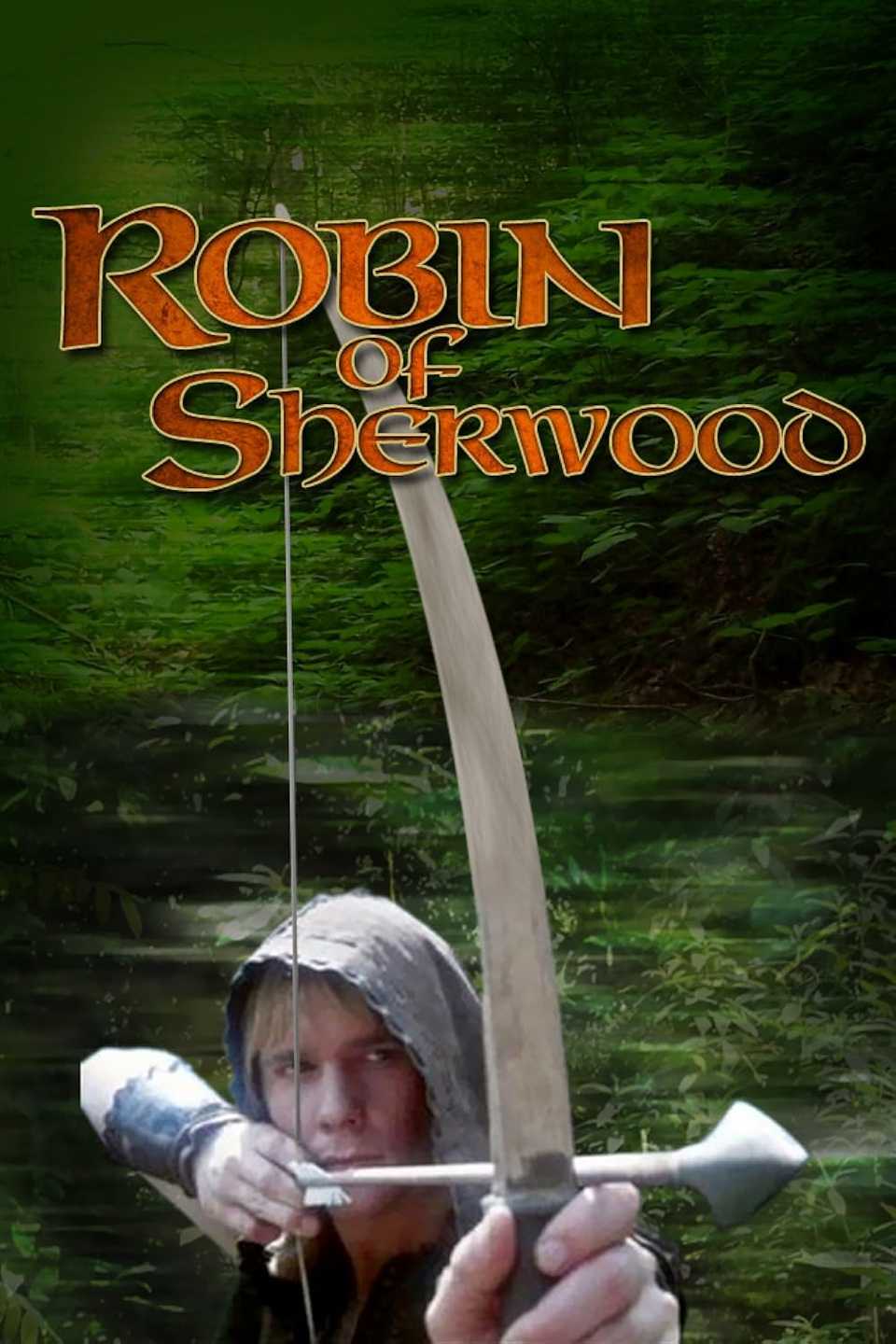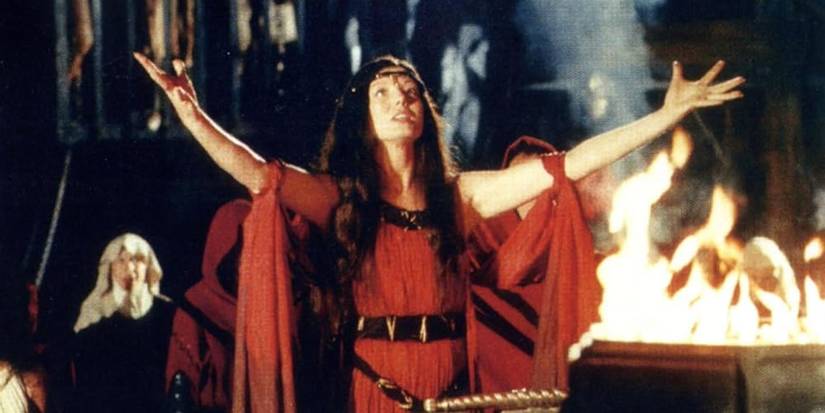41 Years Later, This Fantasy Series’ Unnerving Two-Parter Remains a Folk Horror Masterpiece
Forget the sanitized fairy tale version of Sherwood Forest. Robin of Sherwood once delivered a story that felt more like a nightmare whispered around a campfire than a family adventure. In the two-part saga “Swords of Wayland,” Robin and his band don’t just battle soldiers or greedy nobles, but they face a Satanic cult hidden inside a nunnery, where eerie chanting fills the air, shadows stretch unnaturally long, and the Hounds of Lucifer hunt at dusk.
This wasn’t just an ambitious episode, but rather it was something else entirely. Front and center is Michael Praed (Nightflyers, 1987) as Robin of Loxley, all quiet intensity and mythic energy, matched by Ray Winstone as Will Scarlet, whose rough-edged loyalty grounds the story in something human as things spiral into full-on occult horror. It’s what happens when a show about a legendary British figure and his band of outlaws leans hard into pre-Christian mysticism. This also isn’t The Adventures of Robin Hood with Errol Flynn. Nor is it Kevin Costner’s Robin Hood: Prince of Thieves. It’s much darker and grittier.
‘Robin of Sherwood’ Didn’t Just Visit the Darkness — It Lived There
What makes “Swords of Wayland” so striking — even now — is how fully it commits to the darkness. There’s a moment in the first hour when Scarlet starts to suspect something is off. You can see it in Winstone’s eyes, the way his usual scowl becomes something more primal. Fear, not of death, but of something wrong, ancient, and violent. This isn’t just a fun fantasy romp. It’s The Wicker Man with longbows. It’s The Witch if you swapped Black Phillip for Herne the Hunter. The villains aren’t sniveling sheriffs or slapstick soldiers, but are instead cloaked in red, invoking things older than the Church. The nunnery at Ravenscar Abbey that serves as their stronghold is shot like a Hammer horror film, all echoing footsteps and moaning wind. There’s one sequence where Much (Peter Llewellyn Williams), the most innocent member of Robin’s group, becomes hypnotized by the cult. And it’s played dead straight. No comedy. No relief. Just the creeping realization that something ancient has taken root in this holy place.
When someone’s being controlled by Morgwyn of Ravenscar (Rula Lenska), their eyes turn white, reminiscent of the eerie shots in 1972’s Horror Express. Even the cinematography changes. The show, normally shot in rich earth tones and natural light, turns cold and blue-lit, dreamlike, and almost Giallo-esque in spots. The camera lingers too long. The music (Clannad’s haunting score) drops into unsettling silence, replaced by dissonant chants and droning sound design. And that’s where the genius of it lies.
This wasn’t horror by accident, but rather it was horror by design. The pacing slows down to let the dread creep in. The characters stop quipping and start whispering. The stakes shift from “will we survive this raid?” to “is the forest even on our side anymore?” The moment Herne the Hunter, Robin’s pagan god/spirit guide, warns him not to enter the cloister, it becomes clear: this isn’t just a bad situation. This is a spiritual war, and the forest might not be enough to save them this time.
‘Robin of Sherwood’ Wasn’t Supposed To Be Folk Horror, but That’s Exactly What It Was
It’s easy to forget how early Robin of Sherwood was playing in this space. This aired in 1984, years before Ari Aster’s Midsommar or The Witch made folk horror a buzzword again. Robin of Sherwood was doing this before Robert Eggers was writing in archaic English and putting goats on merch and before the underrated Kill List made you second-guess every pub conversation. “Swords of Wayland” doesn’t just hit the same notes — it prefigures them.
It understands that real folk horror isn’t about gore. It’s about getting caught up in something that’s older than you can comprehend. It’s the sound of ancient languages and the terrifying suspicion that the soil itself is capable of remembering blood. There’s a moment in it when Robin’s men are trapped in a cage suspended above a fiery pit as the Lucifer-worshipping nuns are attempting to summon the devil. Scarlett yells at Morgwyn’s right-hand man, Peter Verdelet (Dallas Adams), to inform Morgwyn that she can go to hell. Verdelet responds nonchalantly, “She expects to.” This will undoubtedly send a chill up the spine of the innocent viewer.
The Hounds of Lucifer themselves are men in suits of armor who wear demonic, wolf-like helmets with hinged “snouts” and fangs, not simple masks. They wear billowing cloaks that make their riding seem as if they are on fiery steeds. It’s not just “good vs. evil.” It’s something more primal, with Paganism fighting itself. The light and dark sides of the old ways are colliding. Even though the good guys win (sort of), the forest doesn’t feel safer afterward. It feels quieter, like it’s waiting.
‘Robin of Sherwood’ Would Have a Huge Impact on Horror If It Aired in 2025
If “Swords of Wayland” debuted in 2025, it would have a huge impact on the horror community. There’d be frame-by-frame breakdowns and threads about the symbolism of the Hounds. “Think pieces” would undoubtedly emerge about whether the nunnery scenes were coded critiques of patriarchal religion. People would lose their minds over the synth-goth score layered over monastic chants. Comparisons would be made side-by-side with The Witch, and we wouldn’t be able to escape memes of Herne the Hunter.
Instead, this aired quietly on ITV, watched by a generation of British kids who probably didn’t sleep well afterward. It also played in America in the ’80s on Showtime, and a small but loyal audience discovered a series that was unlike anything else that had come before. That’s the tragedy and beauty of it. Robin of Sherwood wasn’t trying to become the best folk horror series you’ve ever seen — it was just trying to tell a damn good story. But, because it refused to hold your hand or tone down the darkness for the Saturday night slot, it accidentally stumbled into greatness. It became something scarier, stranger, and timeless.

- Release Date
-
April 28, 1984
- Network
-
ITV



